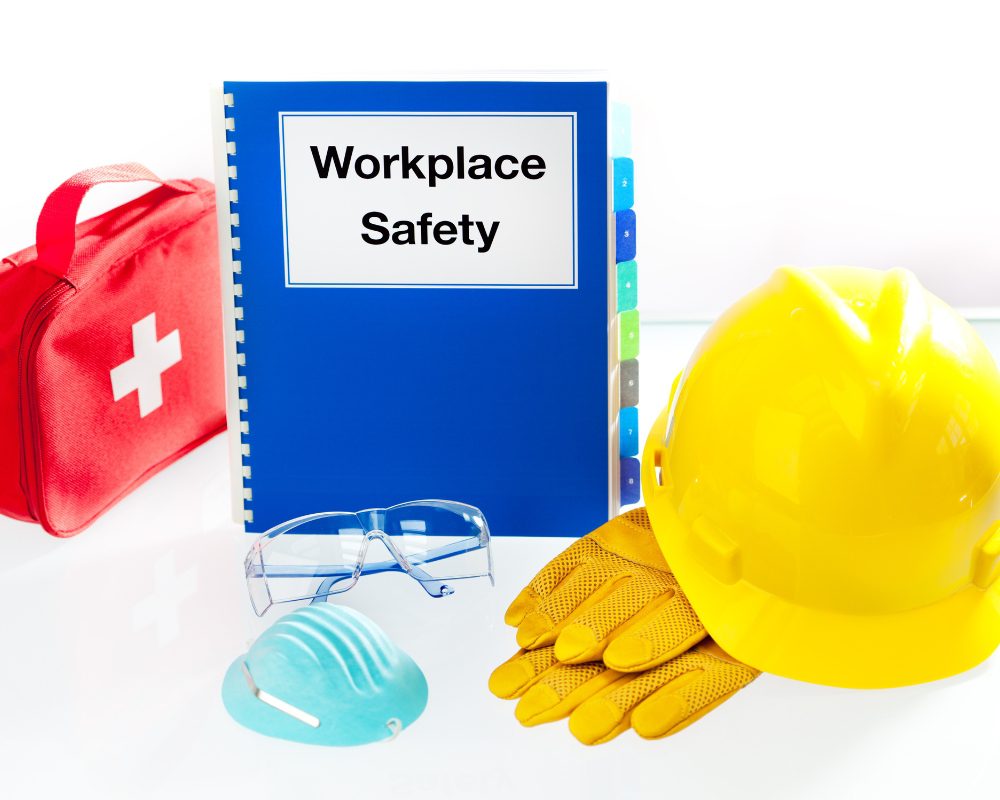Transform Australian Workspaces with Robust OHSMS Policies for a Safer Future
Organizational health and safety management systems (OHSMSs) are increasingly important for organizations in Australia, as they provide a framework for reducing workplace risks and ensuring the well-being of employees. OHSMS policies are intended to protect workers from the potential hazards associated with their daily operations while also providing guidance on how to manage these risks effectively.
This article will discuss the importance of OHSMS policy in Australia, including its scope and objectives. It will also explore some key components for the successful implementation of an effective OHSMS policy within an organization. Finally, it will outline some best practices for implementing and monitoring a comprehensive OHSMS policy that meets relevant regulatory requirements.
Definition Of Ohsms
The Occupational Health and Safety Management System (OHSMS) is a framework of policies, processes, procedures and guidelines designed to ensure the safety of employees in Australia.
It provides a comprehensive system for managing health and safety risks across an organisation. OHSMS covers all areas of risk management, including hazard identification, assessment and control; training; emergency preparedness; communication systems; accident investigation and reporting; record keeping; compliance monitoring and enforcement.
Organisations are encouraged to develop their own OHSMS that best meets the needs of their particular work environment. The key elements of an effective OHSMS include:
- clear roles
- responsibilities and accountabilities for workers and managers regarding health and safety issues
- development of objectives based on identified hazards which should be regularly monitored and evaluated against performance targets
- provision of appropriate resources to enable implementation of the system’s elements
- adequate communication channels between supervisors, employees and other stakeholders such as contractors or visitors
- regular auditing to ensure compliance with standards set out by local regulatory bodies
In this way, organisations can provide a safe working environment for their staff while ensuring ongoing compliance with relevant regulations.
Legislation Influencing Ohsms In Australia
The legislation that influences OHSMS in Australia is extensive and complex. This includes workplace safety laws, risk assessment regulations, health and safety regulations, and Australian standards. The primary purpose of these laws is to ensure a safe working environment for all employees.
Organisations must comply with the relevant state or territory law governing occupational health and safety. They also need to meet any applicable national standard related to their industry sector as part of their OHSMS compliance obligation. Further, they should consider conducting a risk assessment process to identify hazards and develop control measures. Risk assessments can help reduce potential risks associated with operations or activities carried out at the organisation’s premises.
Organisations are responsible for ensuring that their staff are aware of the applicable laws influencing OHSMS in Australia so that everyone understands their responsibilities when it comes to workplace safety. Understanding what needs to be done will not only enable organisations to stay compliant but also allow them to create a safe work environment for everyone involved.
Components Of An Ohsms In Australia
An OHSMS (Occupational Health and Safety Management System) is a comprehensive system of policies, processes, procedures, and regulations that are designed to promote workplace safety in Australia. It ensures the implementation of effective measures for risk assessment and control, as well as ongoing monitoring activities to ensure compliance with Australian occupational health and safety standards.
Essential components of an OHSMS include:
- A commitment from senior management to provide adequate resources for the implementation of safety plans;
- Procedures for identifying hazards and assessing associated risks;
- Documentation outlining roles and responsibilities within the organisation;
- Policies outlining how potential risks will be managed.
It is important to note that these components must be regularly reviewed and updated according to changes in legislation or other relevant factors. Furthermore, it should be noted that there must also be an appropriate system in place for communication between all stakeholders involved with an OHSMS. This includes internal staff, contractors, suppliers, customers, visitors, etc., who may need access to particular areas or information related to safety management practices.
Effective communication helps improve understanding of safety protocols throughout the business environment – ultimately leading to improved outcomes when it comes to minimising risk.
Benefits Of Implementing An Ohsms
The implementation of an Occupational Health and Safety Management System (OHSMS) in Australia can provide a range of benefits to employers, employees, and other stakeholders. By incorporating the principles of occupational safety, workplace health, and improved safety practices through OHSMS policies, organisations are able to reduce risk across their operations while also providing improved employee satisfaction.
An OHSMS provides the framework for organisations to effectively manage their health and safety obligations which often leads to increased productivity among staff as well as improved morale. Companies that have implemented such systems have reported better compliance with statutory regulations surrounding occupational health and safety due to more effective processes being put into place.

Additionally, there is evidence that suggests implementing an OHSMS reduces incidents in the workplace by increasing worker engagement in safety matters. This ultimately means fewer costly insurance claims or legal proceedings relating to accidents at work.
Overall, developing a comprehensive OH&S policy not only helps meet all relevant regulatory requirements but also improves job satisfaction, efficiency, morale and overall well-being among employees – making it beneficial for all involved parties.
Challenges In Establishing An Ohsms
Establishing an Occupational Health and Safety Management System (OHSMS) can be challenging, as there are a number of obstacles that must be overcome before the system is operational. The challenges associated with implementing such a system range from identifying potential risks to developing strategies for mitigating these risks.
Organizations must identify any safety management issues that may arise in their workplace and develop solutions that enable them to adequately manage the risks posed by these issues.
This involves assessing current practices and creating policies that address areas of concern, ensuring that all staff members understand their obligations under the OHSMS, and providing adequate training so they are able to fulfil their responsibilities.
Additionally, organizations need to ensure that appropriate monitoring systems are in place, so they can track performance against expectations and take corrective action if necessary.
Creating an effective OHSMS requires significant effort and dedication; however, it can provide numerous benefits for both employees and employers alike. By addressing existing OHSMS barriers, companies will have greater control over the health and safety of their workforce and ultimately improve overall productivity levels within the organization.
Establishing an effective OHSMS also allows employers to demonstrate their commitment to occupational health and safety and ensures compliance with relevant legislation.
Best Practices For Maintaining An Ohsms
The implementation of an Occupational Health and Safety Management System (OHSMS) is critical to the success of any business. Establishing an effective OHSMS requires a significant investment in time, resources and expertise, as well as an ongoing commitment to maintaining it.
The best practice for maintenance involves establishing policies that are tailored to specific workplace needs and regularly reviewing them with employees to ensure they remain up-to-date with changing regulations. Additionally, regular risk assessments should be conducted to identify potential hazards and determine appropriate controls.
In Australia, organisations must comply with relevant legislation when creating their OHSMS policies; this includes the Work Health and Safety Act 2011 (Cth). This act outlines employers’ workplace health and safety responsibilities, including providing a safe environment for workers to do their job without risks or harm.
It also provides guidance on how businesses can go about meeting these obligations by introducing processes such as hazard identification, risk assessment and control measures. As part of compliance with the OH&S Act, businesses must also review their OHSMS policies periodically to ensure they remain up-to-date with changes in laws and regulations.
It is important for businesses to create an OHSMS policy using best practices applicable across all industries in order to protect their staff from work-related injuries or illnesses.
By conducting regular risk assessments and updating policies according to legislative requirements, organisations will not only be able to reduce workplace accidents but also demonstrate their commitment towards ensuring a safe working environment for all employees.
Frequently Asked Questions
How Often Should The Ohsms Be Reviewed?
When it comes to the OHSMS, one of the most important questions is how often should it be reviewed. This review frequency is essential for ensuring that the OHSMS remains compliant with industry-specific requirements and tailored to business operations. Here are some key considerations when looking at setting an appropriate review frequency:
- Cost of implementation – The cost of implementing a new system or reviewing existing ones needs to be taken into account.
- Ensuring compliance – Reviewing your OHSMS frequently will help ensure that you remain compliant with applicable regulations.
- Tailoring to business operations – Different businesses have different operational requirements, so regular reviews can help ensure that the OHSMS is tailored to those specific needs.
Reviewing an OHSMS on a regular basis helps organizations stay up-to-date with changing regulations and trends in their industry. It also allows them to tailor the policy according to their unique circumstances while still complying with laws and standards set by governing bodies. Companies need to take this into consideration when determining what review frequency would best suit their organization’s needs.
Additionally, they must factor in any costs associated with implementing or revising such policies as well as potential risks if these policies aren’t properly followed. Having a clear understanding of these factors will enable companies to make more informed decisions about how often they should review their OHSMS and ultimately lead to better compliance and safety outcomes for everyone involved.
What Is The Cost Associated With Implementing An Ohsms?
The cost associated with implementing an Occupational Health and Safety Management System (OHSMS) is a significant consideration for organizations. When deciding to invest in the implementation of an OHSMS, it is important to understand all of the costs that will be incurred as part of this process. The cost of implementing an OHSMS can include both direct and indirect costs, such as training expenses, installation fees, consulting services, software licensing fees, auditing costs, and other related expenses.
It is also important to consider how these costs may vary depending on the size and complexity of the organization, its industry sector, or the specific requirements of its particular OHSMS policy. For example, larger organizations may require more resources to implement their system and should factor additional financial considerations into their budgeting processes.
Additionally, some industries have very specific standards when it comes to occupational health and safety management systems which could further increase implementation costs if not taken into account at an early stage.
Organizations must assess all potential costs before embarking on any implementation procedures, so they are able to adequately plan for success while keeping budgets under control. A comprehensive understanding of the full scope of OHSMS implementation costs will help ensure that organizations are able to make informed decisions regarding their investment in effective safety management practices without overspending or compromising quality standards.
What Is The Best Way To Ensure Compliance With Ohsms In Australia?
Ensuring compliance with Occupational Health and Safety Management Systems (OHSMS) is a critical part of successful business operations in Australia. To ensure adherence to OHSMS regulations, it is important for organizations to have well-structured plans that cover all aspects of the system’s implementation and maintenance.
An effective approach involves developing comprehensive policies and procedures that are tailored to meet specific organizational needs. This should include training staff on OH&S topics, conducting regular safety audits, monitoring employee performance and providing feedback when necessary.
Additionally, it is essential to invest in resources such as technology, software and other tools to assist with the implementation process. By doing this, organizations will be better equipped to identify any potential hazards or risks associated with their work environment while also being able to effectively respond when an issue arises.
Organizations must also ensure they remain up-to-date with relevant legislation pertaining to OHSMS compliance in Australia by regularly reviewing current laws and regulations governing health and safety management systems. Doing so enables them to stay ahead of any changes which may affect how they manage their own system. Furthermore, businesses should strive for continual improvement by engaging stakeholders at all levels within the organization in order to gain buy-in from everyone involved.
This will help create an environment where individuals feel comfortable raising issues or concerns about potential threats to worker safety without fear of retribution or punishment. Ultimately, taking these proactive steps can go a long way towards helping organisations achieve full compliance with OHSMS regulations in Australia.
Are There Any Special Requirements For Ohsms Implementation In Certain Industries?
When it comes to achieving compliance with OH&SMS, certain industries may require tailored operations. This is due to the fact that different industrial sectors are subject to varying standards and regulations depending on the nature of their activities. In this regard, there may be special requirements for OH&SMS implementation in those specific industries. To ensure successful compliance across all levels, a comprehensive approach must be taken when developing an OH&SMS policy for such industries.

The key elements of any OH&SMS program should include identifying hazards and risk management strategies as well as training staff on safe practices. Furthermore, monitoring systems should also be put in place to audit performance against established benchmarks and standards. Additionally, regular reviews should take place in order to keep abreast of new developments or changes that could affect safety measures at each facility or site.
By adhering to these principles, organizations can establish effective programs which will help them achieve better results in terms of compliance with Australia’s legal framework for occupational health and safety management systems.
OH&SMS policies provide clear direction on how businesses should conduct themselves when it comes to workplace safety and health matters while ensuring they adhere to relevant legislation throughout Australia.
With careful consideration given towards industry-specific requirements during the policy development process, organizations can create tailored frameworks that will effectively guide their operations towards greater compliance with Australian law so that workers remain safe from harm in their workplaces.
How Can An Ohsms Be Tailored To Specific Business Operations?
Tailoring an occupational health and safety management system (OHSMS) to specific business operations is a critical step in ensuring compliance with industry regulations. It allows organizations to customize their OHSMS according to the unique requirements of the workplace while still maintaining the necessary safety standards. By doing so, they can ensure that all employees are provided with sufficient protection from potential hazards present in their respective working environments.
When tailoring an OHSMS for specific business operations, it is important to consider factors such as the size and complexity of the organization, the type of work being conducted, the level of risk associated with activities and any other relevant information.
A thorough review of existing policies should be undertaken to determine what measures need to be implemented or adapted in order to meet industry regulations. Additionally, specialized knowledge may be required when identifying which elements must be incorporated into each policy based on particular operational needs.
It is also essential for employers to assess how effective their tailored OHSMS will be in practice before implementation begins. This includes undertaking regular reviews throughout its development stages and conducting audits once complete. Such practices help guarantee that any changes made have been properly evaluated and do not pose unnecessary risks for staff members or customers.
In addition, ongoing training should be offered alongside these processes in order for employees to remain informed about applicable safety management protocols within their place of work.
Conclusion
The Occupational Health and Safety Management System (OHSMS) is an important part of any workplace. It ensures the safety of employees, customers and other stakeholders. As such, it should be regularly reviewed to ensure that it remains up-to-date with current regulations and standards. The cost associated with implementing an OHSMS will vary depending on the size and complexity of a business; however, there are certain steps that can be taken to reduce costs while still achieving compliance.
When it comes to ensuring compliance in Australia, employers must familiarise themselves with relevant laws, regulations and codes of practice in order to create a tailored system that meets all requirements. Depending on the industry or sector involved, additional measures may need to be put in place for specialised operations. This could include specific training for staff or extra controls for hazardous substances.
Overall, having an effective OHSMS in place is essential for keeping people safe at work. Reviewing this system periodically allows businesses to stay ahead of legislation changes and identify potential risks before they become problems. By taking these steps, organisations can minimise their risk profile while creating a healthy working environment for everyone involved.







